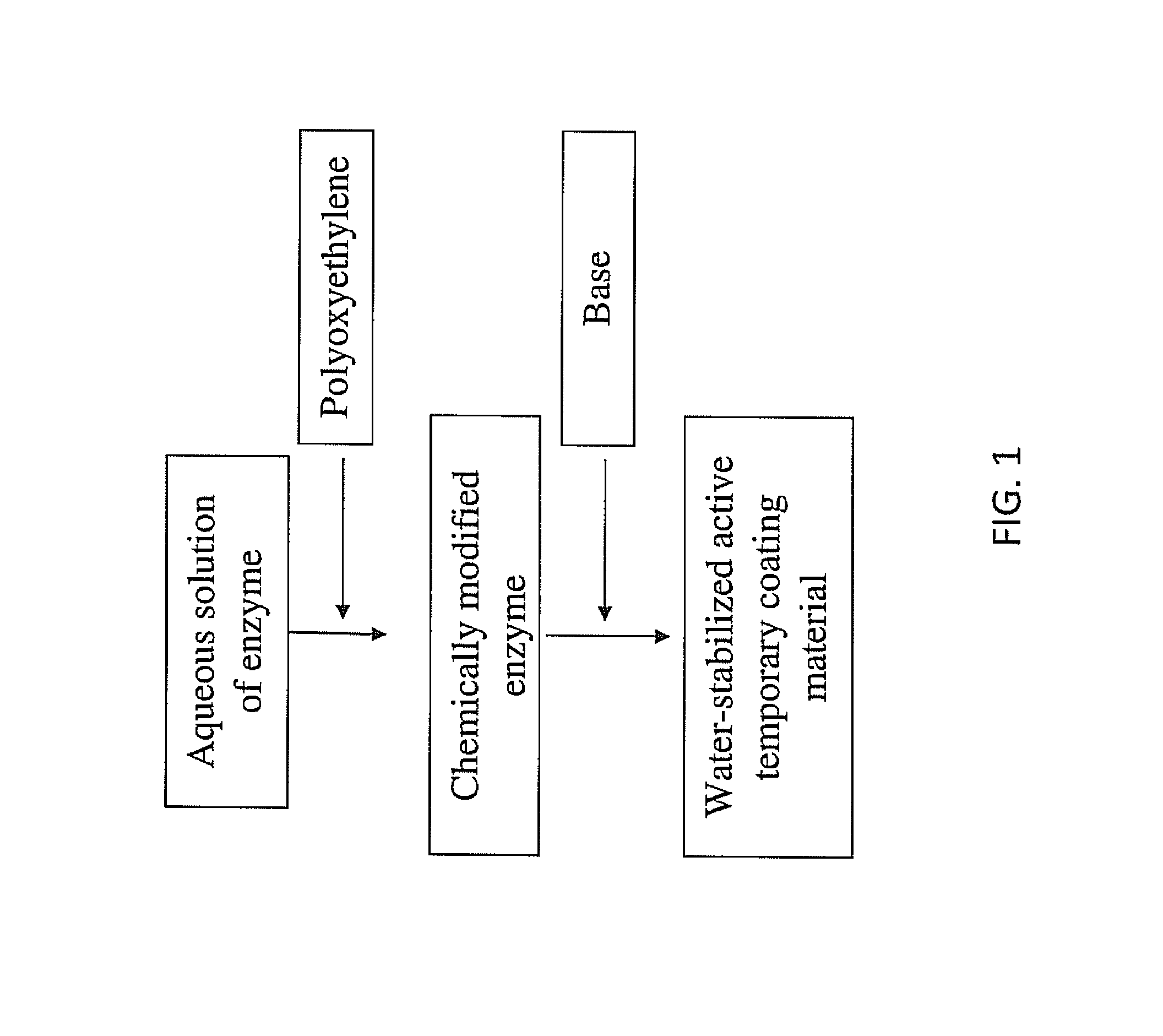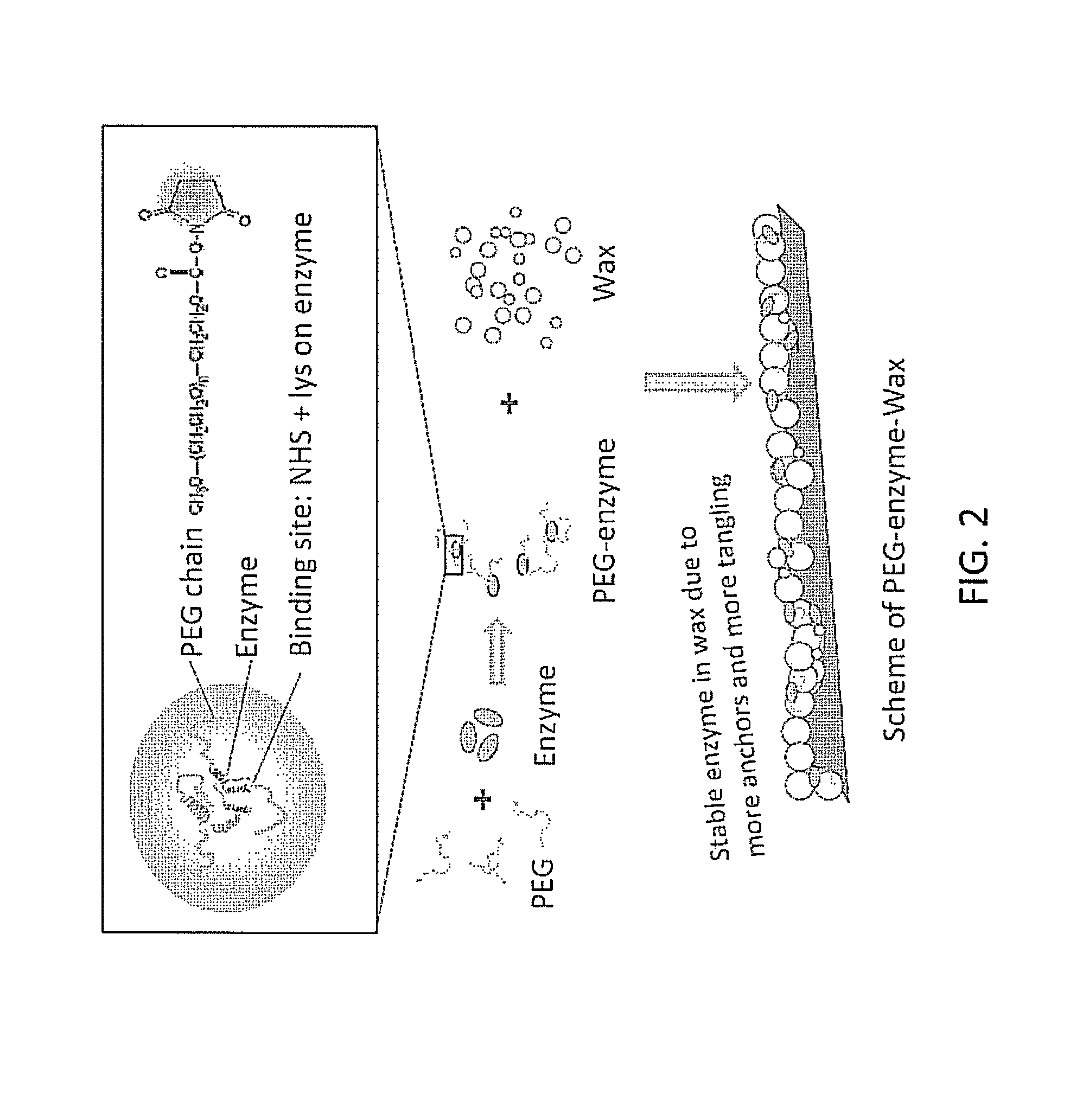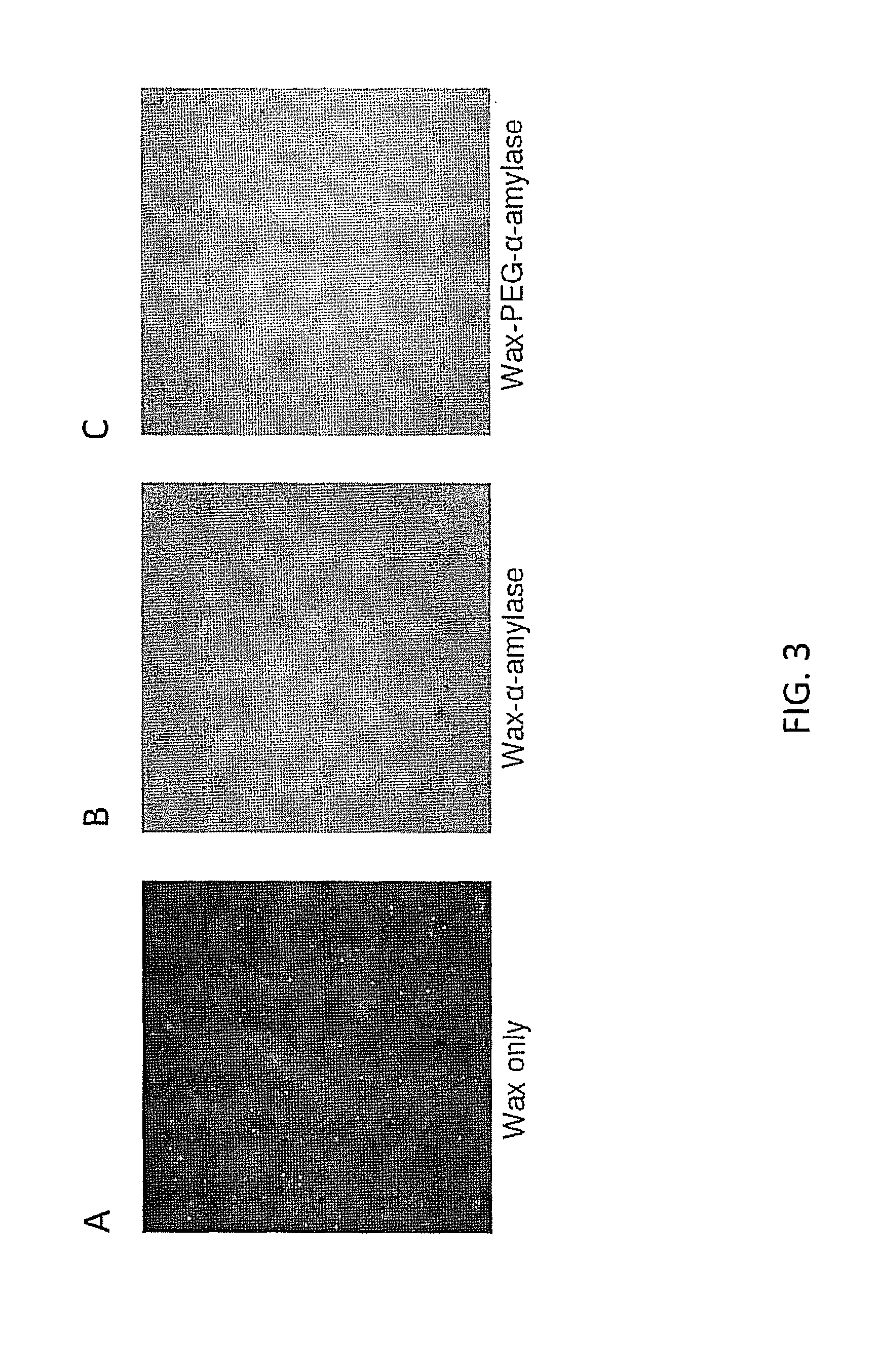Coatings containing polymer modified enzyme for stable self-cleaning of organic stains
a technology of organic stains and modified enzymes, which is applied in the field of coating compositions, can solve the problems of unpleasant marks on the surface deteriorating the appearance of products, and the inability to clean organic stains from biological sources, and achieves the effect of less effective cleaning of stains
- Summary
- Abstract
- Description
- Claims
- Application Information
AI Technical Summary
Benefits of technology
Problems solved by technology
Method used
Image
Examples
example 1
Materials for Production of Water-Stabilized Active Temporary Coating Material
[0081]Materials: Freeze-dried crickets are purchased from PetSmart. Cricket bodies reportedly contain 58.3% protein. (D. Wang, et al., Entomologic Sinica, 2004; 11:275-283.) α-Amylase KLEISTASE SD80 from Bacillus subtilis (EC 3.2.1.1), lipase (lipase A12 (E.C.3.1.1.3) from Aspergillus niger), Protease N, Protease A, Protin SD AY-10, B. sterothermophilus TLP (THERMOASE C160), and THERMOASE GL30 (low activity preparation of B. sterothermophilus TLP) are obtained from AMANO Enzyme Inc. (Nagoya, JAPAN). Bovine serum albumin (BSA) from bovine serum, starch from potatoes, starch from wheat, maltose, sodium potassium tartrate, 3,5-dinitrosalicylic acid, Na2(PO4), NaCl, K2(PO4), casein, trichloroacetic acid, Folin & Ciocalteu's phenol reagent, Na2(CO3), sodium acetate, calcium acetate, tyrosine, p-nitrophenyl palmitate, ethanol, iodine, glucose, maltose, maltotriose, maltohexose, dextrin (10 kDa and 40 kDa) are ob...
example 2
Preparation of Enzymes
[0082]Lipase, α-amylase, and thermolysin are each prepared by ultrafiltration from raw powder. For α-amylase, a 150 mL solution from raw powder (6.75 g) is prepared in DI water. For thermolysin, a 150 mL solution of 1.5 g B. sterothermophilus thermolysin-like-protease (TLP) is prepared in DI water. For lipase, a 150 mL solution of 1.5 g lipase A12 is prepared in DI water. The insoluble large impurity in raw powder is removed by filtration over a 200 nm PTFE filter. The obtained solution has a protein concentration of 20 mg / mL (measured by the Bradford method) and is maintained on ice.
[0083]Ultrafiltration is performed using a 150 mL Amicon cell (cooled with ice) with a pressure of 55 psi and an ultrafiltration membrane with a cut-off of 30 kDa from Millipore (Billerica, Mass.). Ultrafiltration is repeated 3 times by refilling the cell back to 150 mL of DI water after each run. The final remaining purified protein solution is quantified by the Bradford method an...
example 3
[0084]PEGylation of enzyme. Purified enzyme (c′-amylase, thermolysin, or lipase) is mixed with PEG (monofunctional linear PEG10000, PEG12000, PEG20000, or combinations) derivatized with succinimidyl ester at a mole ratio of 1:5 enzyme:PEG in 0.05 M sodium phosphate buffer pH 7.5, and subjected to mild agitation by shaking at 200 rpm at room temperature for 60 minutes. Some preparations further involve isolation of non-reacted PEG by filtration with a filter with an appropriate molecular weight cut-off for each PEG used in the PEGylation reactions.
PUM
| Property | Measurement | Unit |
|---|---|---|
| molecular weight | aaaaa | aaaaa |
| molecular weight | aaaaa | aaaaa |
| time | aaaaa | aaaaa |
Abstract
Description
Claims
Application Information
 Login to View More
Login to View More - R&D
- Intellectual Property
- Life Sciences
- Materials
- Tech Scout
- Unparalleled Data Quality
- Higher Quality Content
- 60% Fewer Hallucinations
Browse by: Latest US Patents, China's latest patents, Technical Efficacy Thesaurus, Application Domain, Technology Topic, Popular Technical Reports.
© 2025 PatSnap. All rights reserved.Legal|Privacy policy|Modern Slavery Act Transparency Statement|Sitemap|About US| Contact US: help@patsnap.com



